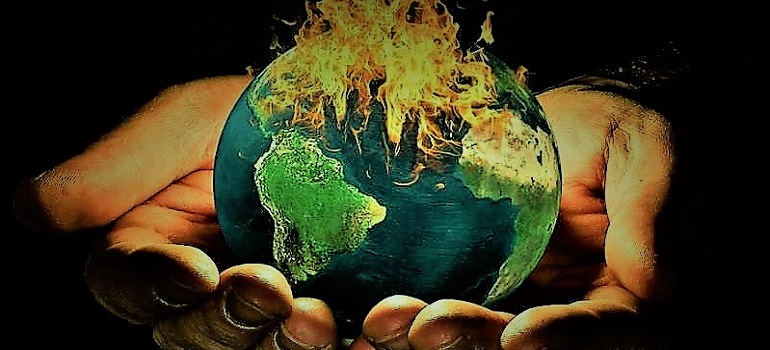Over 150 people still missing and seven people reported dead after a glacier burst at Joshimath in Uttarakhand’s Chamoli district which triggered massive flooding of the Alaknanda and Dhauliganga rivers on Sunday. Due to the glacier dam of the Rishi Ganga Tapovan Hydro Power Project was broken.
Scientists claims that the huge damage is the result of climate change which led to a massive flood after a part of the Nanda Devi glacier broke off in Joshimath in Chamoli district of Uttarakhand.
Mohd. Farooq Azam, Assistant Professor at IIT Indore speaking to IANS said that satellite and Google Earth images do not show a glacial lake near the region, but there is a possibility that there may be a water pocket, or lake inside the glacier, in the region that may have erupted leading to the disaster.
Farooq said “There is no doubt that global warming has resulted in the warming of the region. Climate change-driven erratic weather patterns like increased snowfall and rainfall, and warmer winters have led to the melting point of a lot of snow falling. The thermal profile of ice is increasing…. where earlier the temperature of ice ranged from minus six to minus 20 degree Celsius, it is now minus two, making it more susceptible to melting.”
“It is an unfortunate incident. Our thoughts are with the missing construction workers and affected people of Uttarakhand. While exact cause of this incident is yet to be ascertained and needs an honest investigation, it is evident that increasing human interventions in ecologically sensitive Himalayan region are making it more vulnerable to climate change.
“Heavy construction work in the fragile eco-sensitive zones should be avoided,” Avinash Chanchal, senior climate and energy campaigner, Greenpeace India said.
Another expert, Anjal Prakash, one of the lead authors of a special report on oceans and cryosphere of the Intergovernmental Panel on Climate Change (IPCC), said while it was too early to explain the cause of the devastation, prima facie it seemed to be due to climate change and global warming which has become “an alarming and irreversible situation now”.
He also said that Himalayan region is the least monitored region and requires the government to spend more resources in tracking these areas closely so that there is more awareness.
“Himalayan region is the least monitored region and this event actually shows how vulnerable we could be. I would request the government to spend more resources in monitoring the region better so that we have more information about the change process. The result would be that we are more aware and could develop better adaptation practices,” Prakash, who is also a Research Director and Adjunct Associate Professor at the Indian School of Business (ISB), Hyderabad, said.
Azam further said the thermal profile of ice is increasing, as earlier the temperature of ice ranged from -6 to -20 degree Celsius, it is now -2 degrees, making it more susceptible to melting.
“It is unlikely that this was a cloud burst since weather reports in Chamoli district show sunny weather till today with no record of precipitation. There is no doubt that global warming has resulted in the warming of the region.
“Climate change-driven erratic weather patterns like increased snowfall and rainfall, and warmer winters have led to the melting point of a lot of snow,” he said.
Greenpeace India”s Chanchal said there was a need to rethink about the current development model for the Himalayan region.
“In 2013, Uttarakhand saw similar incident because of glacial lake outburst flood (GLOF). Researchers said this happened because of global warming which is leading to melting glaciers. They also had warned that such events might happen more frequently in the future.
“To tackle this, we need to rethink about the current development model for Himalaya region. It cannot happen at the cost of environment and local communities,” Chanchal said.
According to official sources, several districts in Uttarakhand, including Pauri, Tehri, Rudraprayag, Haridwar and Dehradun, are likely to be affected and have been put on high alert.
Pointing out the findings of a recent report of Hindu Kush Himalayan Monitoring and Assessment Programme (HIMAP), Prakash said temperatures are rising in the Hindu Kush Himalayan region so the impact in this area will be more.
“The HIMAP report facilitated by ICIMOD (International Centre for Integrated Mountain Development) shows that temperatures are rising in the Hindu-Kush Himalayan (HKH) region and the rise in global temperature will have more impact in the Himalayan region due to elevation-dependent warming.
“If the world can keep the temperature rise to below 1.5 degrees Celsius in the HKH region, it will translate to at least a rise of 1.8 degrees, and in some places, above 2.2 degrees Celsius,” he added.
With PTI Inputs


